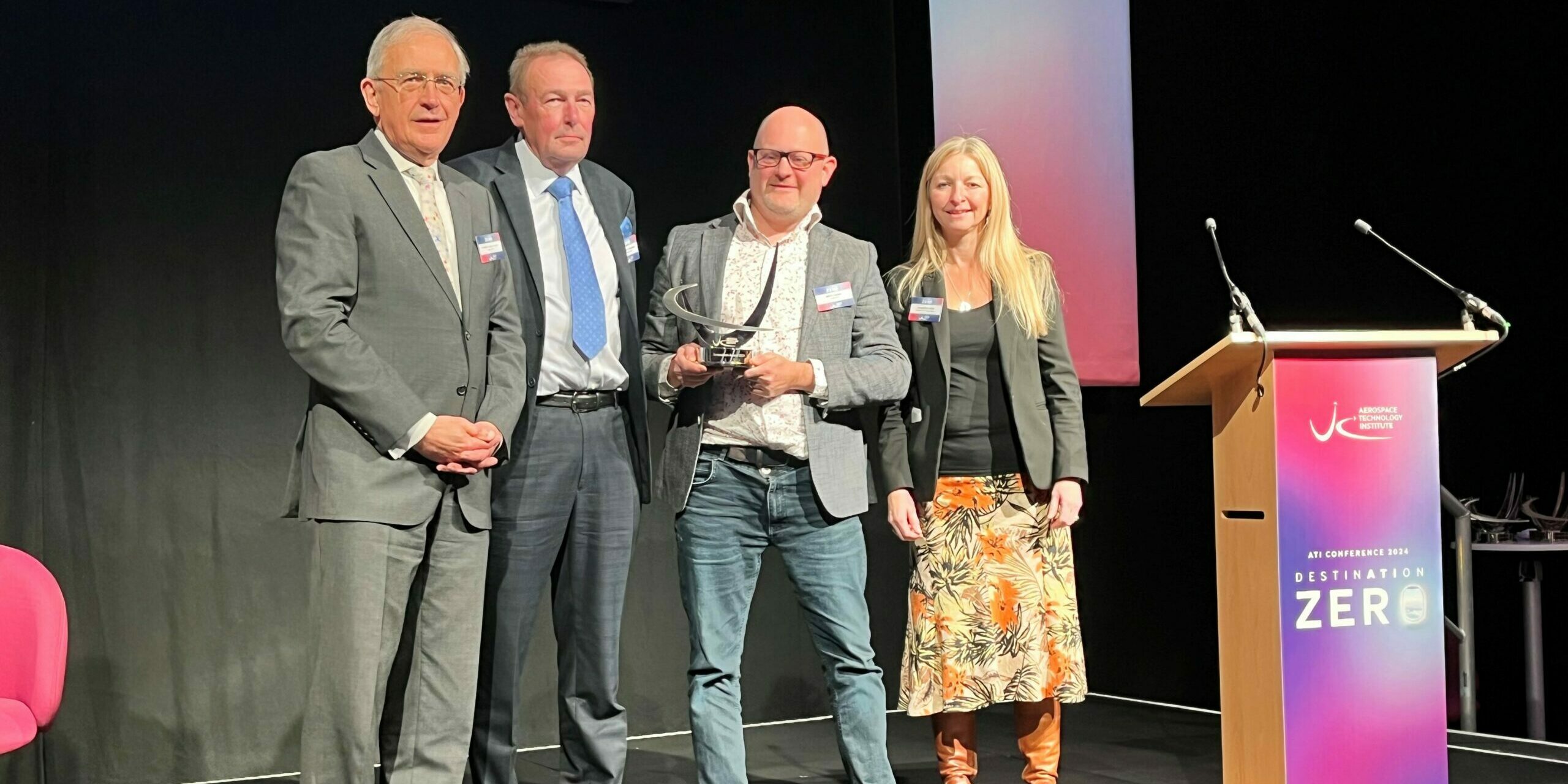Adaptix named most exciting emerging technology at aerospace awards
We are pleased to announce that our subsidiary, Adaptix has been named the most exciting emerging technology at the Aerospace Technology and Innovation awards today.
The Innovation Award, which is presented by the Aerospace Technology Institute (ATI), celebrates technology being developed in the UK that will support the journey to Net Zero 2050 and was presented at the ATI conference in Newport.
Adaptix received the award for its unique imaging capability developed for Non-Destructive Testing (NDT) able to provide detailed images within minutes. Originally developed and matured for the medical sector, the low-power X-Ray technology can inspect traditional, additive-manufactured, and composite components (including dry form) with a high degree of – fidelity. Delivering low-cost, 3D-imaging can be deployed quickly in the field. Through the provision of an ATI grant, the Adaptix team has been working closely with robotics experts at Cranfield University, whose expertise has been crucial in the technology’s evolution for aerospace applications.
Martin Holden, Development Engineering Manager for NDT at Adaptix, said: “We’re thrilled that the potential of our proven imaging technology to revolutionise inspection across the aerospace industry has been recognised with this award.
“Innovation is at the heart of the aerospace industry but, irrespective of how components are made, it is crucial that manufacturers, airframers and MRO businesses have the tools they need to detect potential failure points quickly and efficiently.
“As the industry moves towards lightweighting components, new methods of inspection are required to ensure they are fit for purpose. As well as inspecting structures made from traditional materials or using additive manufacturing techniques, the Adaptix 3D NDT inspection tool can detect typical failure modes in complex composite structures, such as voids, weave variation, inclusions, and needle porosity. Crucially, it can be used early in the manufacturing process, dramatically reducing waste, manufacturing- and inspection-time.
“We’re excited by its potential for the industry and receiving this award in front of an audience of key industry experts is a proud moment for us all and recognises the hard work and ingenuity of the whole Adaptix team.”
Professor Bryn C. Hughes, REng, Chief Scientist, Adaptix NDT added: “Adaptix has shown that its technology can inspect smaller aerospace parts to the level of fidelity that is of relevance to industry. It has now successfully scaled-up this capability to image large aerospace parts – such as wing parts, doors and skins – while maintaining the required resolution. Working closely in partnership with experts at Cranfield University, facilitated through this ATI grant, has allowed us to explore the integration of the capability on to twin robotic systems. This is a hugely exciting development and has the potential for a real game change in in situ NDT.
“Scaling up imaging technologies while maintaining image fidelity is a significant engineering challenge but one that we have welcomed. Adaptix is proud to win the ATI Innovation Award and looks forward to playing a key role hastening the incorporation of composite materials into aerospace sector in pursuit of our Net Zero goals.”
Professor Phil Webb, FIET, Royal Academy of Engineering and Airbus Professor of Industrial Robotics and Assembly and Cranfield University lead on the project, said: “This is a great example of what can be done when two groups with very different knowledge and expertise come together with an open and collaborative spirit. As a Team we are immensely proud of the work done and the truly innovative outcome we have achieved through working together.”
The Adaptix 3D NDT has been supported by the Aerospace Technology Institutes, the National Aerospace Technology Exploitation Programme and the National Composites Centre. Its mobile 3D NDT technology delivers comparable results to CT, X-ray and Ultrasonic testing, with several key benefits including significantly reduced scan times and reduced X-ray power and exclusion zones meaning imaging equipment can be brought directly to an aerospace structure with minimum disruption to busy hangars.
The technology will be on show at the Advanced Engineering Show at NEC Birmingham on 30-31 October. For further information on Adaptix NDE, visit www.adaptixnde.com








